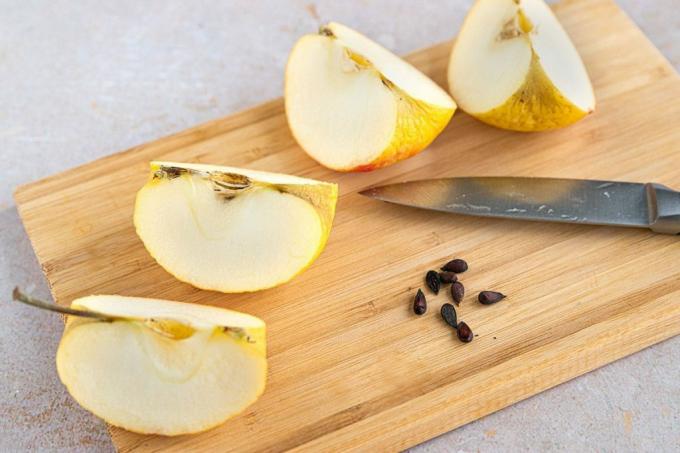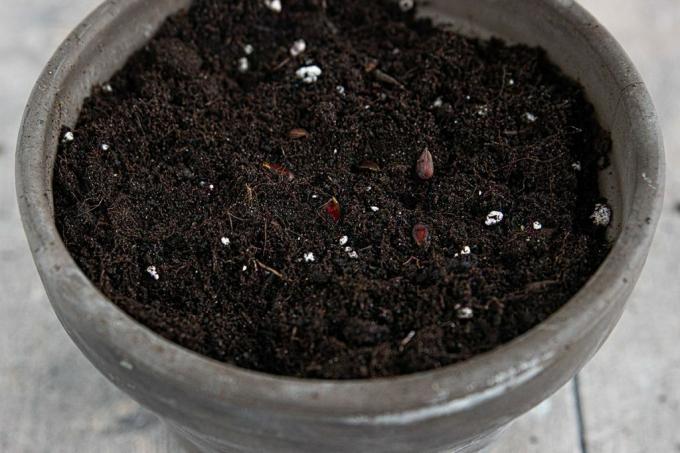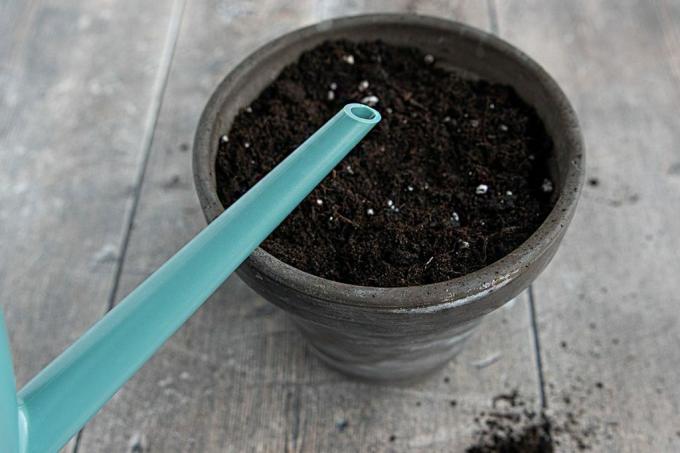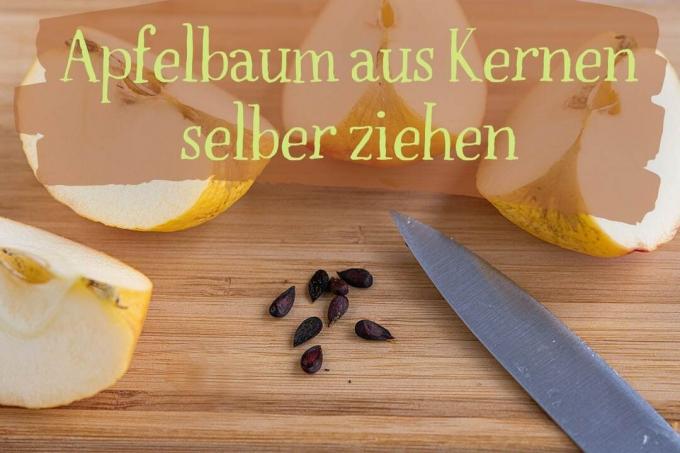
table of contents
- Which cores are suitable?
- Step by step to the apple tree
- The preparation - skillfully stratifying
- The cultivation
- Planting out
- frequently asked Questions
As a child, who has not wondered with curiosity how an apple tree grows from these tiny kernels from the inside of an apple. With our instructions, you too can successfully grow your apple tree.
In a nutshell
- Apple seeds need a winter phase in order to be able to germinate at all
- A tree grown from apple pits can develop very diverse characteristics of its genetic heritage as it grows
- despite the imposing trees, the initial kernels are very delicate
Which cores are suitable?
Basically, corresponding trees can be grown from all the seeds that you take from a fully ripe apple. When the entire fruit is ripe, the kernels have also completed their development cycle and have the potential to create a new plant. However, it is worth taking a look at the apple variety used. Species that are native to us have a high chance of success because you can be sure that the trees will cope well with the climate, temperatures and weather. Typical
sorts are for example: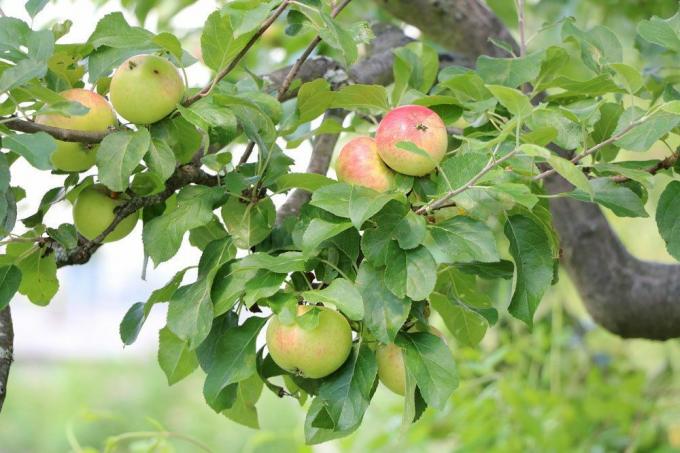
- Alcmene
- Berlepsch
- Boskoop
- Elstar
- Gold parmane
- Jonagold
Note: Refrain from trying so-called club varieties. The fruits often lose their ability to germinate in the course of the breeding process. Since the propagation takes place in a vegetative way through the so-called "grafting", this is not of essential importance.
Step by step to the apple tree
We have put together detailed instructions for you on how to grow your own apple tree.
The preparation - skillfully stratifying
In the wild, an apple falls from the trunk, the pulp rots and the pips migrate into the ground. There they survive the first winter with minus temperatures and ground frost. The cold leads to the fact that the natural growth inhibitors in the apple core disintegrate and the germination capacity arises. In order for your core to grow too, you have to artificially simulate winter.
- Expose and clean the apple core
- Moisten kitchen paper
- Wrap the core in kitchen paper and enclose it with a freezer bag
- Store the core in the refrigerator for two to four weeks
As soon as you can see the first signs of germination on your seeds, you can proceed with planting.
Tip: If you use seeds from the pomace of the must production instead of a core from a fresh apple, stratification is not required. The growth inhibitors are also broken down by the fermentation process of the pomace.
The cultivation
Since the tiny kernels are initially very sensitive, it is recommended that you grow your future apple tree in the pot at the beginning. Because contrary to the kernels themselves, the young plants are very susceptible to low temperatures or drought.
- Plant pot with a diameter of min. Fill 15 centimeters with loose garden soil
- Press the earth loosely
- Place the cores on the ground
- Apply a top layer of around one centimeter of garden soil
- Pour well and keep moist
- Set up light, warm and without drafts until the young plant has grown
Planting out
As soon as your sapling has reached a size of around 30 centimeters and the temperature is no longer around 10 degrees fall below, the time has come to relocate to the final location and you can continue your apple tree outdoors pull up.
- Choose a sunny location with enough space for the mature apple tree
- Dig the planting pit around one and a half times as wide and deep as the plant pot
- Remove the root ball from the pot, water it well and place it in the planting pit
- Fill in garden soil on all sides and press lightly
- Water intensively and keep moist for the next 4 weeks
Tip: Provide a hare wire protection against browsing by animals. Even if deer don't come and go in your yard, rabbits or even cats with claws or teeth can also cause enormous damage.
frequently asked Questions
When grafting, a strong and resilient tree sapling is "supplemented" with a shoot of the desired high-yielding variety as a basis for growth. For this purpose, the upper part of the shoot of the growth base is replaced by the same part of the target variety. If done properly, the bast layer grows together and the new tree resumes further development.
Apple trees are self-sterile. That means they cannot fertilize themselves. Each apple core therefore contains half of the genetic basis of the pollinating apple variety in addition to the mother plant. What happens in individual cases is left to chance.
As is common in nature, you can also cultivate your sapling directly in the field. However, the initial chances of survival are worse here, as the general conditions of weather, heat and water are less constant. In addition, predators and pathogens reach the seedling much more easily.

